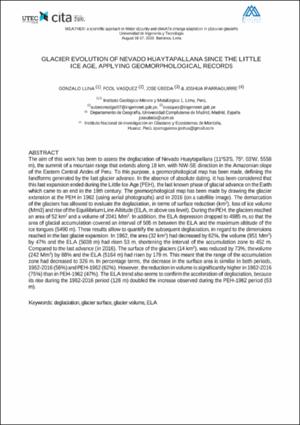Please use this identifier to cite or link to this item:
https://hdl.handle.net/20.500.12544/3773Files in This Item:
| File | Description | Size | Format | |
|---|---|---|---|---|
| Luna-Glacier_evolution_nevado_Huaytapallana.pdf | Artículo de congreso | 603.99 kB | Adobe PDF | View/Open |
This item is licensed under a Creative Commons License












